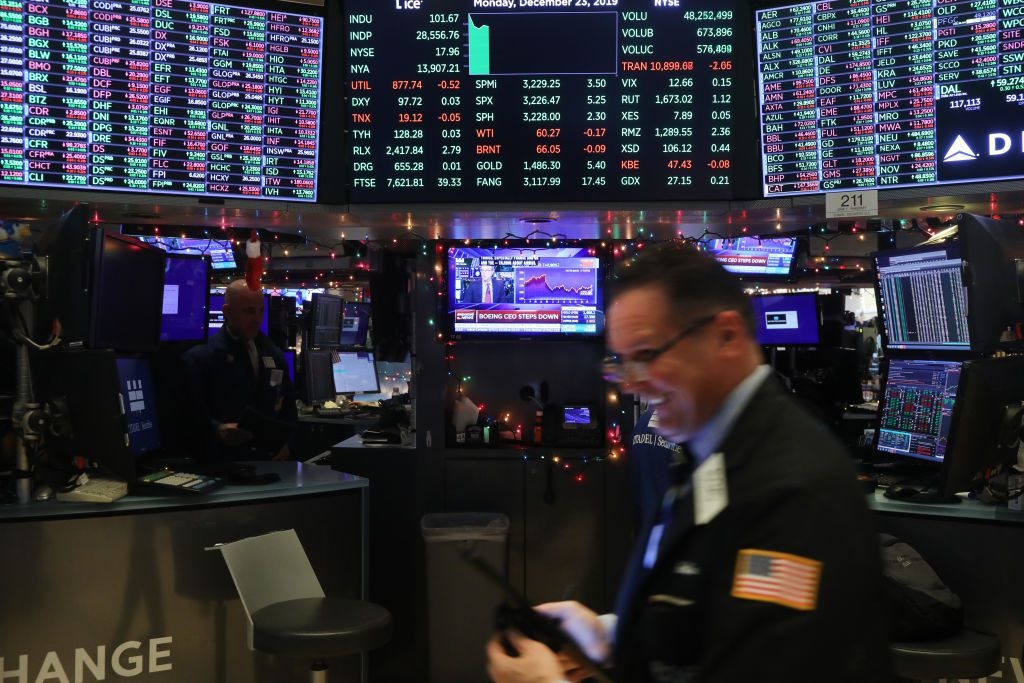
Dow Futures experience a slight increase as investors evaluate disappointing employment figures, trade developments, and the prospective trajectory of Federal Reserve interest rates. Robust earnings provide markets with a degree of protection amid indications of a cooling U.S. economy and the ambiguity surrounding the implications of Washington’s tariff policies. Meanwhile, a write-down in its stake of Kraft-Heinz impacted income at Warren Buffett’s Berkshire Hathaway.
U.S. stock futures indicated an upward trajectory on Monday after a significant decline at the close of the previous week, as the anticipation of reduced interest rates alleviated concerns regarding the U.S. economy. Dow futures contract experienced an increase of 128 points, representing a 0.3% rise. Similarly, S&P 500 futures saw a gain of 24 points, or 0.4%, while Nasdaq 100 futures rose by 102 points, also reflecting a 0.4% increase. The primary indices on Wall Street experienced a decline on Friday, with the benchmark S&P 500 notably recording its most significant drop in over two months. Sentiment was adversely affected by President Donald Trump’s announcement of increased tariffs on various trading partners, alongside a disappointing jobs report that included significant downward revisions, indicating a more pronounced slowdown in the American labor market than previously expected. Trump intensified the selling pressure by dismissing the head of the statistics bureau responsible for compiling the jobs data, asserting — without evidence — that the figures were “rigged.” Analysts have indicated that the dismissal raises questions about the enduring credibility of U.S. economic data, with certain observers expressing worries that Trump’s successor may prioritize appeasing the White House over delivering accurate statistics. Markets responded to the July employment survey by increasing their expectations for a Federal Reserve borrowing cost cut as early as September. However, media reports indicated that many Fed policymakers are not yet adopting a markedly dovish stance, opting instead to await additional data before making any decisions.
Additionally, a broadly solid corporate earnings season has provided support to stocks, reinforcing the durability of a multi-year surge in enthusiasm surrounding the applications of artificial intelligence. Prominent technology firms such as Facebook-owner Meta Platforms and software giant Microsoft have reported exceptional results in recent days and, perhaps more significantly, reaffirmed their intentions for substantial capital expenditures on artificial intelligence. These statements have alleviated some persistent concerns regarding the ramifications of Trump’s tariffs, although a number of firms have started to suggest that price increases may be on the horizon in the coming months. Despite the fact that over half of the companies in the S&P 500 have submitted their reports, the year-on-year earnings growth for the second quarter is projected at 9.8%. This contrasts with an earlier estimated increase of 5.8% as of July 1, based on LSEG data referenced by Reuters. Over 80% of the companies that have disclosed their earnings have exceeded analysts’ profit forecasts, compared to an average of 76% in the previous four quarters. This week, markets will be monitoring earnings from the likes of economic bellwether Caterpillar, burger titan McDonald’s, and media giant Disney. All of the firms are significant constituents of the blue-chip Dow, which is currently positioned just beneath its record high achieved in December.
Berkshire Hathaway has reported a $3.76 billion write-down on its investment in consumer food company Kraft Heinz, while a decline in insurance underwriting premiums also impacted second-quarter returns from Warren Buffett’s extensive conglomerate. Along with tepid gains from common stocks such as American Express and Apple, the Kraft-Heinz write-down and premiums drop contributed to a steep decline in overall net profit to $12.37 billion from $30.35 billion in the same period a year ago. Revenue declined by 1.2% to $92.5 billion. Nonetheless, Berkshire experienced a nearly 20% increase in operating income at its BNSF division, primarily driven by cost reductions and decreased fuel expenditures. Berkshire’s cash reserves at the conclusion of the second quarter amounted to $344 billion, a modest decline from $348 billion in the preceding quarter, yet still close to an all-time record high. The earnings arrive as Berkshire anticipates the imminent departure of the 94-year-old Buffett. He will resign at the conclusion of 2025 from his long-standing position leading a firm that has established his reputation as a prominent figure in financial markets, with current Vice Chair Greg Abel poised to take over the role.
Oil prices stabilized on Monday, despite a consensus among leading producers to implement a significant production increase in September, thereby augmenting global supply. At 03:10 ET, Brent futures experienced a decline of 0.2%, settling at $69.80 per barrel, while U.S. West Texas Intermediate crude futures saw an increase of 0.3%, reaching $67.53 per barrel. The Organization of the Petroleum Exporting Countries and their allies, collectively referred to as OPEC+, reached an agreement on Sunday to increase oil production by 547,000 barrels per day for the month of September. The decision, aligning with market anticipations, signifies a complete and premature reversal of OPEC+’s most substantial set of output reductions, totaling approximately 2.5 million bpd, which represents around 2.4% of global demand.
Gold prices exhibited a mixed performance in early European trading on Monday, as investors took the opportunity to realize some profits after a rise in the previous session, which was driven by expectations surrounding potential cuts to Fed interest rates. Spot gold experienced a decline of 0.2%, settling at $3,355.69 per ounce, whereas December gold futures saw an increase of 0.3%, reaching $3,408.67 per ounce by 03:34 ET.Gold prices surged more than 2% on Friday, following disappointing jobs data that fueled expectations for a potential Federal Reserve rate cut in September. The increase in the yellow metal, which typically performs well in a low-interest-rate context, contributed to a weekly gain following two consecutive weeks of losses. In other developments, Bitcoin experienced an increase of 0.8%, reaching a value of $114,567.60, stabilizing after a decline of approximately 3% over the preceding five days.
